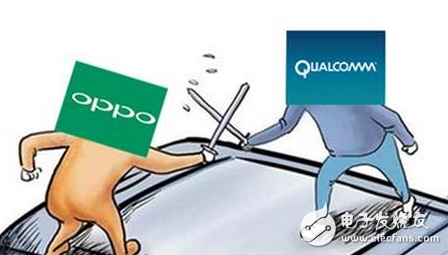As mobile phones enter the era of smart phones, people's dependence on smart phones is increasing day by day. It can be seen that the screen of mobile phones is getting bigger and bigger, but the battery capacity has been in a relatively stable range, so the mobile phone The endurance ability has been pushed to the cusp of the wind again and again, I do not know how many users vomit.
However, in the face of the bottleneck of battery technology, many technicians are also in a hurry. It is in this context that a solution to save the country by curve appears, it is fast charge.

Since the battery itself has insufficient endurance, it is a good solution to start with the charging speed. In the current products on the market, there are roughly four types of fast charging solutions, namely Qualcomm's QuickCharge version (such as QC2.0). , QC3.0), MediaTek Edition (Pump Express and Pump Express plus), OPPO's VOOC, and TI's Maxcharge.
The last solution is actually compatible with both Qualcomm QC2.0 and MediaTek Pump Express. It can be seen as a comprehensive version of the original USB 5V charging technology, so we generally divide the mainstream fast charging technology into the former. Three kinds.

We know that several fast charging schemes have been improved many times in speed compared to previous charging efficiencies. Among them, the more familiar advertising copy is “Charging for 5 minutes, talking XX hoursâ€. This is undoubtedly doubtful. Is security really guaranteed under the charging efficiency so told?
Why can fast charge shorten the time?
To explore security, we still have to start from the theory of tutoring. At least, we must first understand the principle of fast charging, so why can fast charge shorten the time? From the physical calculation formula, power (P) = voltage (U) x current (I), in the case of a certain battery power, the power marks the charging speed, apply this formula, we will look at three fast charging schemes, Better understand.

VOOC
Low voltage high current mode

First of all, let's talk about the earlier fast charging scheme VOOC. This scheme adopts the low voltage and high current mode. In short, in the case of a certain voltage, by increasing the current, the shunt is used to perform shunting and parallel connection. After the shunt, the pressure shared by each circuit will be smaller, and the same processing will be carried out in the mobile phone, and the pressure on each circuit will be smaller, so that the charging speed can be reduced while the mobile phone can be reduced. The heat of the adapter and the phone when charging.
I believe many of my friends know that OPPO's flash charging cable line uses a 7-pin design, in order to solve the problem of excessive loss of large current in the transmission line, the battery contacts are also increased accordingly, and have taken certain The current sharing measure is also to solve the problem of battery heating under high current.
At the same time, VOOC uses an MCU single-chip microcomputer to replace the step-down circuit in the traditional charging circuit. The intelligent MCU management chip can automatically identify whether the current charging device supports VOOC flash charging to determine whether to use the flash charging mode.
Quick Charge
High voltage high current mode

Compared to VOOC, Qualcomm Quick Charge 2.0 uses a different way, high voltage and high current mode, as the name suggests, that is, increase the current and voltage at the same time, through the previous formula P = UI, we can find this way It is the best way to increase power, but the disadvantage is that it increases the voltage and generates more heat, so that the energy consumed is increased, and the voltage and current cannot be increased freely without limit.
Fortunately, in order to make up for the lack of consumption, Qualcomm introduced the Quick Charge 3.0 solution, which uses the "Intelligent NegoTIaTIon for OpTImum Voltage" (INOV) algorithm to achieve optimal power transfer at any time and maximize effectiveness. Compared to Quick Charge 2.0, it can increase the fast charging speed by up to 27% and reduce the power loss by up to 45%.
And in terms of charging voltage, Quick Charge 2.0 offers 5V, 9V, 12V and 20V four-speed charging voltage, and Quick Charge 3.0 is available in 200mV increments, providing flexible options from 3.6V to 20V. This allows it to adapt to a variety of mobile phones, allowing the phone to get the right voltage to achieve the desired charging current, thereby minimizing power loss, improving charging efficiency and improving thermal performance.
Screw Terminal Connector,Pcb Screw Terminal,Screw Terminal Block Connector,Screw Type Terminal Blocks
Cixi Xinke Electronic Technology Co., Ltd. , https://www.cxxinke.com